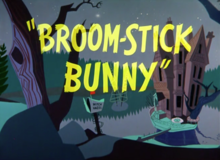
Bugs Bunny is a fictional character created in the late 1930s at Warner Bros. Cartoons and voiced originally by Mel Blanc. Bugs is best known for his featured roles in the Looney Tunes and Merrie Melodies series of animated short films, produced by Warner Bros. Earlier iterations of the character first appeared in Ben Hardaway's Porky's Hare Hunt (1938) and subsequent shorts before Bugs's definitive characterization debuted in Tex Avery's A Wild Hare (1940). Bob Givens, Chuck Jones, and Robert McKimson are credited for defining Bugs's design.

What's Opera, Doc? is a 1957 American Warner Bros. Merrie Melodies cartoon directed by Chuck Jones and written by Michael Maltese. The short was released on July 6, 1957, and stars Bugs Bunny and Elmer Fudd.
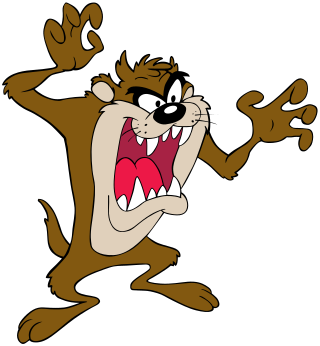
The Tasmanian Devil, commonly referred to as Taz, is an animated cartoon character featured in the Warner Bros. Looney Tunes and Merrie Melodies series of cartoons. Though the character appeared in only five shorts before Warner Bros. Cartoons shut down in 1964, marketing and television appearances later propelled Taz to new popularity in the 1990s.
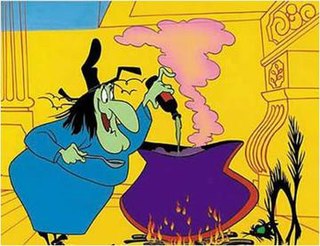
Witch Hazel is an animated cartoon character in the Warner Bros. Looney Tunes and Merrie Melodies series of cartoons and TV shows. Witch Hazel is a fairy tale witch antagonist with green skin, a round figure, bulbous facial features, and a single tooth. The name is a pun on the witch-hazel plant and folk remedies based on it.

Granny is a fictional character created by Friz Freleng, best known from the Looney Tunes and Merrie Melodies animated short films of the 1950s and 1960s. She is the owner of Tweety Bird and, more often than not, Sylvester and Hector. Her voice was first provided by Bea Benaderet from 1950 through 1955, then by June Foray for almost 60 years then Candi Milo took over in 2017 following Foray’s death.
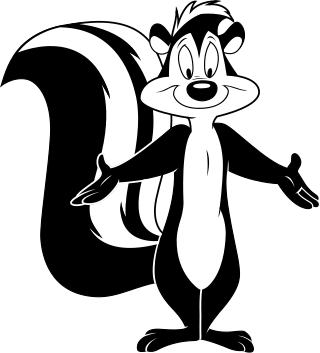
Pepé Le Pew is an animated character from the Warner Bros. Looney Tunes and Merrie Melodies series of cartoons, introduced in 1945. Depicted as a French anthropomorphic striped skunk, Pepé is constantly on the quest for love and pursuit of romance but typically his skunk odor cause other characters to run away from him.

The Sylvester & Tweety Mysteries is an American animated television series produced by Warner Bros. Animation which aired from September 9, 1995 to February 5, 2000 on Kids' WB. The final episode, containing the segments "The Tail End?" and "This Is the End", was never shown on Kids' WB, not premiering until December 18, 2002, when the show aired in reruns on Cartoon Network. 52 episodes were produced.

Transylvania 6-5000 (1963) is a Warner Bros. Merrie Melodies animated short directed by Chuck Jones. The short was released on November 30, 1963, and stars Bugs Bunny.

Penelope Pussycat is an animated cartoon character, featured in the Warner Bros. classic Looney Tunes animated shorts. Although she is typically a non-speaker, her "meows" and "purrs" were most often provided by Mel Blanc using a feminine voice. The character did not originally have a permanent name; she was alternately referred to as "Penelope", "Fifi", "Pussycat Purr", and "Fabrette", and animator Chuck Jones' 1960 model sheet simply calls her "Le Cat". The name Penelope Pussycat was created retroactively for Warner Bros. marketing.

Hare Remover is a Merrie Melodies cartoon starring Bugs Bunny and Elmer Fudd, released in 1946. The film was the second Bugs Bunny cartoon to be directed by Frank Tashlin, the first being The Unruly Hare (1945). It was also the last short Tashlin directed before leaving Warner Bros. in 1944 to direct live-action films. His animation unit was handed over to Robert McKimson upon his departure.
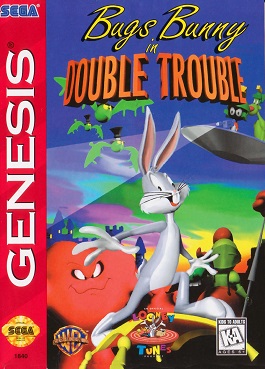
Bugs Bunny in Double Trouble is a Looney Tunes video game developed by Atod AB for the Sega Genesis and Game Gear, released in 1996. The game stars Bugs Bunny and features pre-rendered 3D graphics.
A-Lad-In His Lamp is a 1948 Warner Bros. Looney Tunes cartoon. The short stars Bugs Bunny, and features the Genie and Caliph Hassan Pfeffer, who is after Bugs and the genie in his lamp. The voices of Bugs Bunny and Caliph Hassan Pfeffer are voiced by Mel Blanc, and the voice of the genie is played by Jim Backus. The cartoon is a takeoff of the story of Aladdin's Lamp. Elements of this short would later be re-used for the Arabian era in Bugs Bunny & Taz: Time Busters.
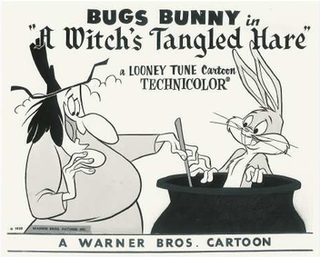
A Witch's Tangled Hare is a 1959 Warner Bros. Looney Tunes theatrical cartoon short directed by Abe Levitow. The short was released on Halloween 1959, and stars Bugs Bunny. Mel Blanc plays voice roles for Bugs Bunny and Sam Crubish, while June Foray voices Witch Hazel. The cartoon makes many references to various plays by William Shakespeare.

Bugs Bunny's Howl-oween Special is a Looney Tunes animated Halloween television special directed by David Detiege, which first aired on CBS on October 26, 1977.

This Is a Life? is a 1955 Warner Bros. Merrie Melodies animated cartoon directed by Friz Freleng, written by Warren Foster, and produced by Edward Selzer, with music directed by Milt Franklyn. The short was released on July 9, 1955, and stars Bugs Bunny. The voices were performed by Mel Blanc, Arthur Q. Bryan, and June Foray in her first work for Warner Bros. This is one of the few Bugs Bunny cartoons whose title does not contain Bugs, bunny, rabbit/wabbit or hare.
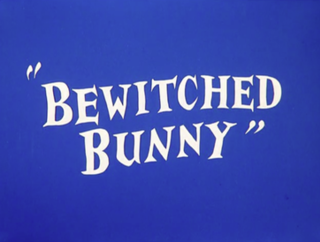
Bewitched Bunny is a 1954 Warner Bros. Looney Tunes cartoon directed by Chuck Jones and written by Michael Maltese. The short was released on July 24, 1954, and stars Bugs Bunny. Jones created the character Witch Hazel who debuted in this cartoon.

The Looney Tunes Show is an American animated sitcom produced by Warner Bros. Animation, and aired on Cartoon Network for two seasons from May 3, 2011, to November 2, 2013. The series differed from others featuring characters from the Looney Tunes, by focusing on stories conformed around a sitcom format involving the characters of Bugs Bunny and Daffy Duck, who live a surburban life together within a neighborhood of fellow cartoon neighbors, dealing with various issues in their own way. Both the characters from the Looney Tunes, as well as the Merrie Melodies theatrical cartoon shorts, were given a 21st century update, with episodes also including a musical short; the first season also included computer-animated shorts involving new antics between Wile E. Coyote and the Road Runner.

Bugs Bunny's 3rd Movie: 1001 Rabbit Tales is a 1982 animated comedy film by Friz Freleng. It combines classic Warner Bros. cartoon shorts with new animation, with Bugs Bunny serving as the story host.
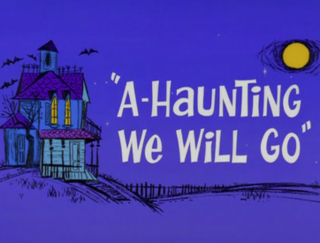
A-Haunting We Will Go is a 1966 Warner Bros. Looney Tunes cartoon directed by Robert McKimson. The short was released on April 16, 1966, and stars Daffy Duck, Speedy Gonzales and Witch Hazel.

Looney Tunes: Rabbits Run is a 2015 American animated direct-to-video adventure comedy film in the Looney Tunes franchise produced by Warner Bros. Animation. It is the first new Looney Tunes direct-to-video film since Bah, Humduck! A Looney Tunes Christmas was released nine years prior. The film was made shortly after The Looney Tunes Show, and shares much of the same crew as that series, including director Jeff Siergey, who had also been a supervising animator on Space Jam and lead animator on Looney Tunes: Back in Action. It was released on August 4, 2015, by Warner Bros. Discovery Home Entertainment, but it was released early on July 7, 2015 on Vudu and Walmart.
